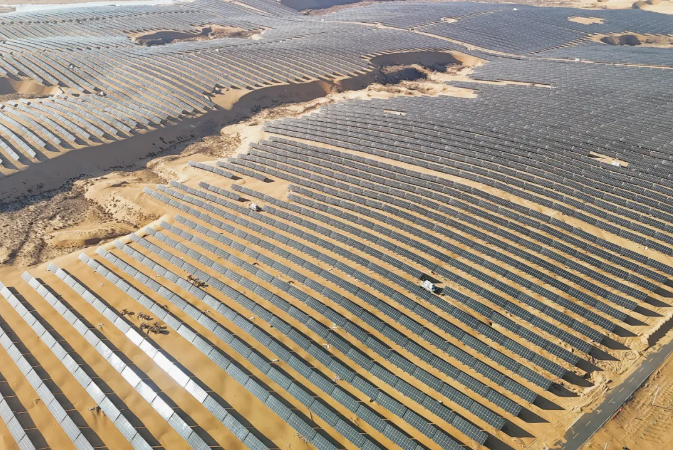Recently, the World's largest "desert-gobi-wasteland" wind-solar power base—The section 7 of the photovoltaic project at the Kubiqi Desert in central-northern Ordos, Inner Mongolia of China—achieved full-capacity grid connection 30 days ahead of schedule. The project was built by CSCEC and other companies.

Covering an area of approximately 30,000 mu (2,000 hectares), the section 7 alone is expected to generate around 3 billion kilowatt-hours of clean electricity annually. This will save approximately 410,000 tons of standard coal and reduce carbon dioxide emissions by about 1.1 million tons each year. The project will enable large-scale development and high-percentage transmission of clean energy, fostering regional green growth and accelerating the transition to a low-carbon energy system.

The project adopts a three-dimensional development model of "power generation above, planting between, and restoration below". By leveraging the panels for shading, windbreak, and sand fixation, and cultivating desert-adapted plants beneath them, the approach effectively curbs desertification while fostering a virtuous cycle between ecological restoration and economic development.